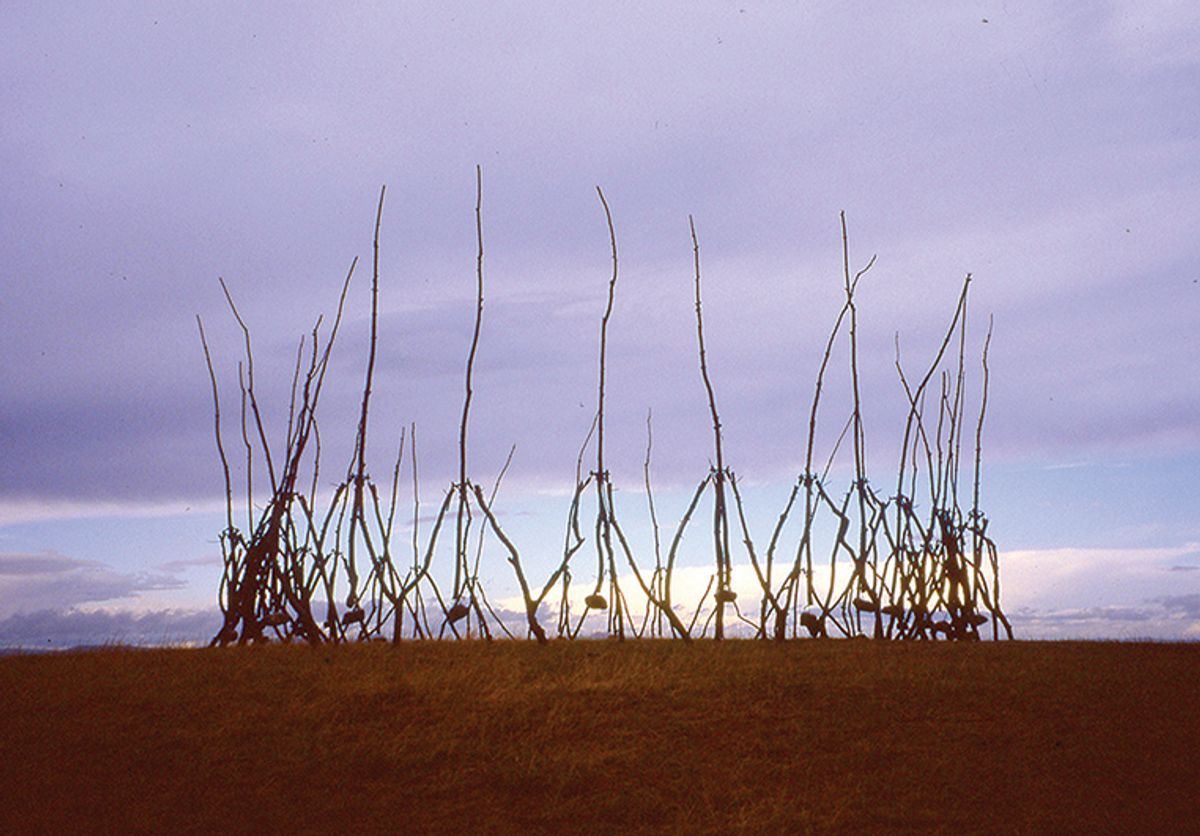A gallery dedicated to George Wyllie, who worked as a customs and excise officer for more than 30 years before becoming an artist, is set to open on 26 April in a new waterfront complex in Greenock, near Glasgow in Scotland.
The new space, known as the Wyllieum, stands alongside Wyllie’s former workplace, Custom House, and is part of a new cruise ship visitor centre called the Ocean Terminal.
Wyllie, who died in 2012 aged 90, is known for works such as Paper Boat (1989), a vast paper vessel that was launched on the River Clyde and toured to the US Another notable work is The Running Clock (1999), located outside Buchanan Bus Station in Glasgow.
Wyllie retired in his late 50s, when he decided to pursue a career in art. “The story goes that he stood on the steps of the customs house and declared that now was the time for art,” Will Cooper, the director of the Wyllieum, tells The Art Newspaper. Wyllie later became friends with the German artist Joseph Beuys.
Works shown will be mainly loaned from public and private organisations. “When George died, a large amount of the work was sold via auction, most of it to a single body [the Dunard Fund, a charitable trust founded by the former concert pianist Carol Colburn Grigor] that’s loaning the work to us,” Cooper adds.
“A lot of works are still with the estate, which are also on long-term loan to us. Other organisations, such as the Roberts Institute of Art, will also lend works.” Founded by the collector David Roberts, the institute plans to loan the piece Straw Locomotive (1987), a model of a suspended train engine made of straw.
The £20.1m Ocean Terminal scheme was delivered by Inverclyde Council via funding from the UK and Scottish governments (the Glasgow City Region City Deal provided £10.4m) along with contributions from the port operator Peel Ports (£8m) and the George Wyllie Foundation, which received £1.7m from the Dunard Fund.
“We have a really good fundraising team that have raised a significant amount of money, which will see us operating for the first few years,” Cooper says. “We have a decent deal with the council regarding our rates.
“What’s exciting is that George is a well-known artist, but I’m not sure the greater public have scratched at the surface,” he adds. “We can really dive more deeply into some of his ideas linked to ecological thinking, colonialism and post-colonialism, all subjects that concern artists now. George was doing it nearly 40 years ago.”
The inaugural show, called Spires (25 April-11 August), presents a selection of Wyllie’s eponymous simple sculptural forms, comprising a three-legged base with a vertical pole, held in place by a rock or stone. These stark pieces acted as “anti-monuments”, marking a specific time or place celebrating “wherever they stood”. Wyllie began making the spires in 1982 and, over the following decades, developed the structures for sites across the UK, Europe and the US.
Different aspects of Wyllie’s practice will be presented in two temporary shows annually, which will also feature other artists.
“His sculptures are brilliant, but the works on paper add an extra layer to the way that he thought about stuff,” Cooper says.
So, who will visit? “I think a certain Scottish audience will come and be really surprised and excited to see a new part of his practice that hasn’t really been shown before; this is similar to how we have reappraised other older artists over the last 20 years,” Cooper says.
The next exhibition in the space will be presented in collaboration with Sculpture House, an artist-led hub in neighbouring Paisley. The show, Home-Work (20 September-16 March 2025), will include works by artists including Laura Aldridge, James Rigler and Nick Evans.


